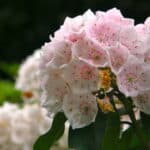The old world monkey with a characteristic long nose.
This monkey is different from other monkeys because of it’s unusual appearance. People didn’t even consider it as a monkey at first glance.

Classification
Kingdom Animalia
Phylum Chordata
Class Mammalia
Order Primates
Family Cercopithecidae
Genus Nasalis
Species larvatus
Distribution:
These are native species to Island of Borneo in southeastern Asia in mangrove forest , swamp area, rainforest as well as lowland area thus acquiring areas with close proximity to water bodies.
Characteristics:
These monkeys are named as Monyet belanda which means long nose monkey, which can even range upto 7 inches especially in males. The lifespan of these species is 13-23 years.these species have different colour patterns of their body varying from bright orange to yellow or pink.these are highly social animals that live in troops or groups of 2-30 members.
Usually consists of a single dominant male and a number of females (up to ten) with their young. males defend their group by showing their teeth and generating loud, honking noises. These groups may occasionally form larger arrays in situations where there is enough food or where there is access to water. Groups of Proboscis monkeys snooze and sleep amid the mangroves at the water’s edge at these periods. Freshwater bodies, such as swamps or rivers, are the principal source of food for many creatures. Swimming is a skill that Proboscis monkeys have mastered. Moreover, they may dive deep when foraging or running from a threat.they also feed on fruits, leaves, young leaves, shoots of mangrove, sometimes they can eat caterpillars larvae hence called as folivorous and frugivorous.
In their reproductive phase, dominant male mate with females in troops between the period of february and november. Females are in charge of foraging and caring for young ones. The offspring have a blue colour face with black coat which changes in 3-4 months. The maturity comes in 4-5 years in male and female both.
Conservation and threat:
The greatest concern to this species right now is the loss of their native habitat due to forest fires and the cutting down of mangrove trees that grow along riverbanks. Meanwhile, due to the growth of human settlements and shrimp farms, those in coastal areas are losing their range. Localized food hunting and intestinal bezoar stones, which are employed in traditional medicine, are also important concerns. The submissive nature of these creatures adds to the threat, making them ‘prime targets’ for hunters.
These are classified as Endangered species according to IUCN as its population has been decreasing in the last 30-40 years thus, protected by law in all regions of borneo and even in malaysia these protected by wildlife protection act, wildlife protection ordinance, wildlife conservation enactment.






